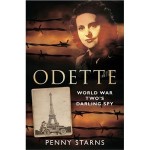By Stacy L. Smith and Marc Choueiti
www.womensmediacenter.com
A new study from researchers at the Annenberg School for Communication & Journalism
shows that females remain less visible and less valued than males in top feature films—both
in front of and behind the camera.
In cinematic content, females appear to be cold, hungry, and alone. At least that is what our
recent gender analysis reveals about the 100 top-grossing theatrically released fictional films in 2008.
We evaluated more than 4,300 on-screen speaking characters and more than 1,200 above-the-line
personnel (directors, writers, producers). Among our current findings:
Females are still lacking visibility in popular motion picture content. Across the 4,370 speaking characters
coded with an identifiable gender, a total of 32.8 percent are girls or women. Put differently, just over
two boys/men appear on the silver screen to every one girl/woman.
On one hand, this is some good news. To date, this is the lowest ratio of males to females we have observed
in our film research! Further, the percentage of females on screen in 2008 is 2.9 percent higher than it was in 2007.
Though a small and positive step in the right direction, the findings reveal that females still take up far less
space than males do in popular motion picture content.
Turning to behind-the-camera employees, the gender gap is far more problematic. For every one working
female director, writer, or producer, there are 4.9 working males in the same above-the-line gate-keeping positions.
Stated in another way, only 8 percent of directors, 13.6 percent of writers, and 19.1 percent of producers were
female across the 100 top-grossing films in 2008. These numbers are unsettling, as one way to diversify images
on screen may be to vary the personnel responsible for making the content. In fact, this is exactly what our results
showed. When one or more females are involved directing, writing, or producing, the number of females on screen
increases substantiall. In the case of screenwriters, the presence of at least one female on the writing team was
associated with a 14.3 percent increase in the percentage of female characters on screen.
Unfortunately, there is another way to interpret these findings. Studio executives may be more likely to hire female
directors or writers when developing female-centric storylines. Such narratives also may depict a higher percentage
of females in the cast. Through the lens of this interpretation, female directors and writers may have substantially
fewer options and less opportunity than their male counterparts to helm or pen a diverse range of stories across a
variety of money making genres. This lack of opportunity, in turn, may affect females’ earning potential.
Indeed, the recent Writers Guild Report shows that female screenwriters’ (in film) median income has been markedly
less than white male screenwriters from 2003 to 2007. In the last year studied in the report (2007), females’ median earnings
were more than $40,000 less than white male’ median earnings.
Not only are females lacking visibility in film, but they are often portrayed as pretty and dressed provocatively.
Clearly, it is not a surprise that alluring and attractive characters fill the silver screen. The problem emerges
, however, when this burden falls disproportionately on the shoulders of females. This is exactly what our data reveal.
Females are more likely than males to be shown attractive, in sexy outfits, or partially naked (see Figure 2). Further, females
are more likely than their male counterparts to possess a small or diminutive waist. Given the lack of clothing worn and narrow
mid sections, the terms ‘cold’ and ‘hungry’ may be fitting descriptors for some of these female characters. Interestingly,
no meaningful differences (5 percent or greater) by gender were observed for chest size or unrealistic body ideal.
Perhaps what was most disconcerting was the physical emphasis placed on 13- to 20-year old females. Our data show that
teenaged females are far more likely than teenaged males to be depicted in revealing apparel (39.8 percent of teen females
compared to 6.7 percent of teen males), partially naked (30.1 percent to 10.3 percent), physically attractive (29.2 percent to 11.1 percent),
and with a small waist (35.1 percent to 13.6 percent). Again, chest size and presence of an ideal figure did not vary meaningfully with gender.
Overall, the findings suggest that males and females are differentially valued in motion pictures. Despite the fact that it is 2011,
females are still far less important or esteemed than are males, particularly behind-the-camera. When they are shown on screen,
females are prized for provocative (or noticeably absent) attire, attributes of their physique, and prettiness.
This is also true of teenaged females. The hypersexualized focus on teens is disquieting, given that exposure to objectifying
media portrayals may contribute to negative effects in some young female viewers. Such depictions may also affect young
male consumers, by teaching and/or reinforcing that girls/women are to be valued for how they look rather than who they are



